
Flavor
17:30, 02-Mar-2019
All wrapped up for Spring
Pauline D Loh
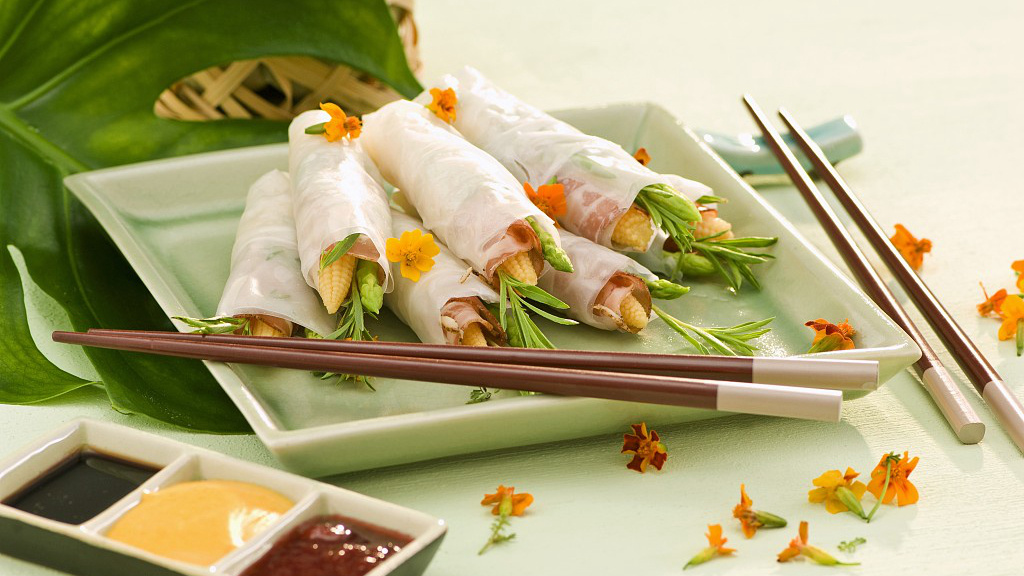
Spring rolls. Ever wondered why they are called that? The English name is a literal translation of the Chinese chunjuan. It is an evocative name that conjures up images of the freshest and greenest herbs of spring carefully tucked into a rolled up crepe.
And yes, it was a seasonal ritual, and had been for countless generations. After a long, cold winter, the solar term of lichun, or the start of spring, is celebrated with a meal of spring rolls.
The first green vegetables, sprouts and maybe some shredded root vegetables stored over winter are shredded and cooked down to a hot stew. Spoonfuls are heaped onto soft flour crepes, wrapped up and eaten as the family gathers around the table.
There are some who say that the first spring rolls originated from the southern provinces, especially in the Chaoshan area of Guangdong Province, and also in Fujian Province.
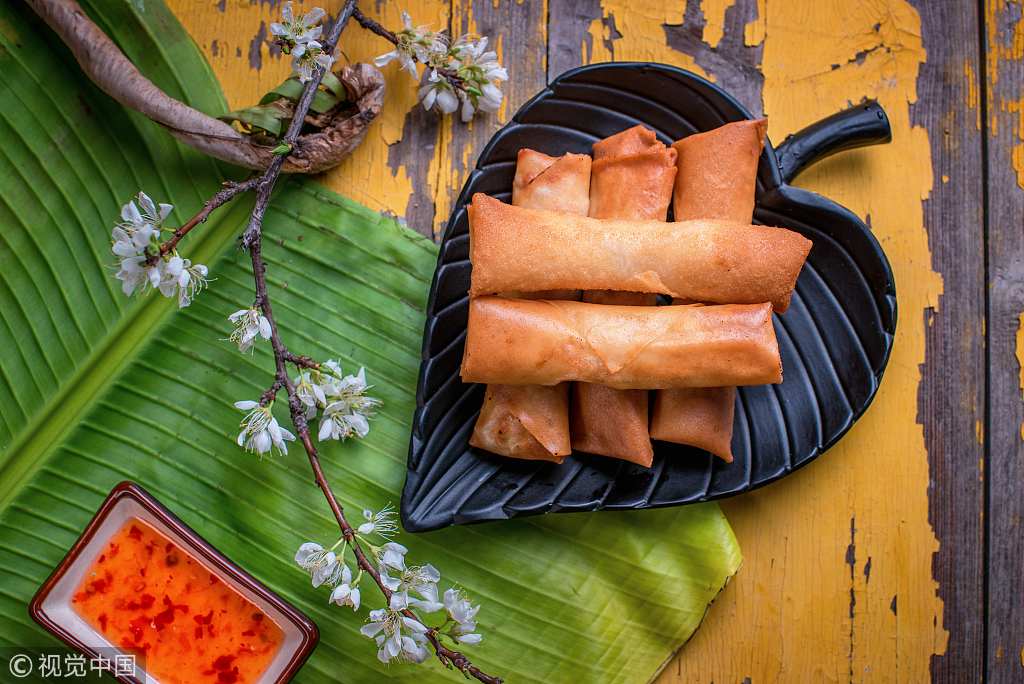
Fried spring rolls. /VCG Photo
Fried spring rolls. /VCG Photo
In Xiamen, especially, fresh spring rolls are still a popular street food. Tourists here have also been tempted to sit in the House of Spring Rolls, the ancestral home of a maritime family where the recipe was reputedly perfected.
The story goes that the patriarch a few generations back was an admiral kept busy defending the coast against invaders and illegal migrants. He was so caught up with his work that he often missed his meals, and his concerned wife decided to bring his food to him.
She wrapped vegetables and meat inside a flour crepe so he can bite into it easily. I guess this is the Chinese version of the Earl of Sandwich story.
The eating of spring rolls is more ritualistic and seasonal in the cold north.
My sisters-in-law come home with a pile of spring roll wrappers every spring. Then they prepare blanched bean sprouts, finely shredded omelet, blanched garlic chives and perhaps a light sprinkle of toasted krill for seasoning.
A little saucer of Beijing sweet bean sauce will also be there to dip the rolls in.
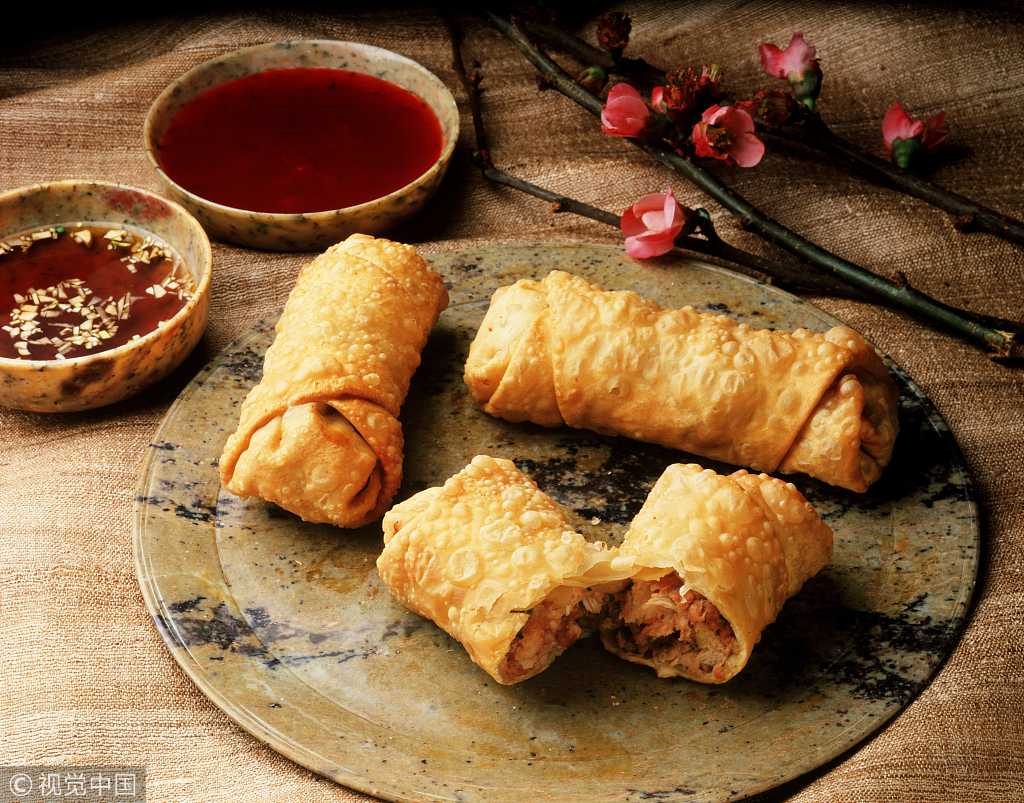
Fried spring rolls. /VCG Photo
Fried spring rolls. /VCG Photo
These are the fresh rolls. Smaller crepes are often deep-fried to a crisp in hot oil. These may be leftovers from the first spring meal, or they could be delicately crafted snacks that "touch the heart", the world famous dim sum or dianxin.
The fried spring roll is a must-have item on the dim-sum cart, and when the Cantonese chefs went abroad and started yum-cha restaurants in Chinatowns all over the world, they brought along the spring roll.
It eventually evolved into a firm favorite with Asian and Western diners and in many countries, it is now a major contributor to local cuisine.
Think of the Vietnamese spring rolls in all their glorious presentations, from soft rice-paper rolls stuffed with seafood and herbs, deep fried rolls full of minced meat, mushrooms and glass noodles.
In the Philippines, the Chinese introduced the lumpia, which became fuller, meatier and crisp with flavor.
In Southeast Asia, spring rolls became popiah or baobing. And in the equatorial heat, they became favorites all year round, and the rolls are spiced up with fried garlic, ground peanuts, sliced Chinese sausages, prawns and chili sauce.
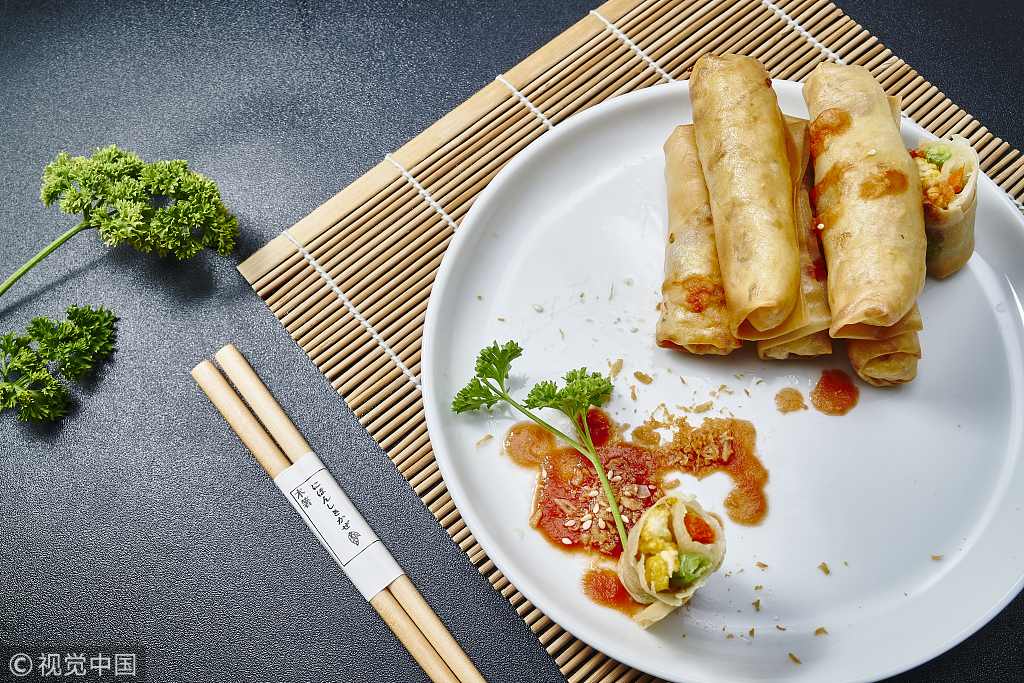
Spring rolls. /VCG Photo
Spring rolls. /VCG Photo
In America, the spring roll stayed true to its form in dim-sum restaurants, but, together with other dishes adapted for the American palate, it became huge egg rolls in Chinese restaurants, suitably up-sized for local appetites.
At home and abroad, this little snack has tenaciously survived the tests of time and distance. No one really remembers its humble and bland origins, but it is certainly no longer confined to just being eaten in spring.
Spring roll wrappers are now easily available in any Chinese supermarket or Asian grocery, but I will never forget how I watched a wizened old woman create a pile of crepes by the roadside in Fujian.
She had a hot griddle on coals in front of her, and she was twirling a very soft ball of dough in her right hand. She had to keep spinning it to keep it together. Every two minutes or so, she wiped the dough ball on the griddle, leaving behind a thin layer of batter which instantly formed a white crepe.
Using a wooden spatula, she flipped the crepe over to join the growing pile by the griddle and was already wiping the dough a second time on the hot plate before the first had fully settled on the pile.
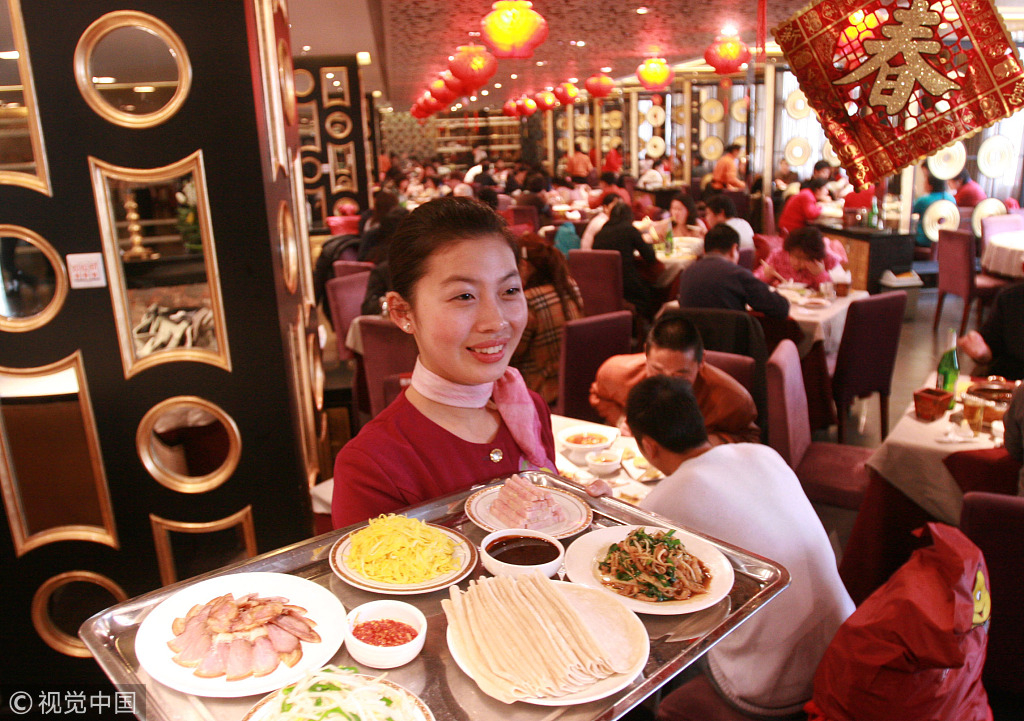
A servant serves spring rolls at a restaurant in Beijing. /VCG Photo
A servant serves spring rolls at a restaurant in Beijing. /VCG Photo
It was mesmerizing, this one-woman production line.
I squatted by her side and fired questions at her in my halting Fujianese and she smilingly answered every one, without missing a beat in her crepe-making.
It's just salt, flour and water, but that was the best bit of cooking alchemy that I had ever seen. Her crepes were chewy, salty and firm enough to contain the dripping vegetable stew without breaking. Perfect.
Spring rolls can make a fascinating meal for a jovial gathering of friends, or family. Try them soon.
(Cover: Spring rolls. /VCG Photo)
Source(s): China Daily

SITEMAP
Copyright © 2018 CGTN. Beijing ICP prepared NO.16065310-3
Copyright © 2018 CGTN. Beijing ICP prepared NO.16065310-3